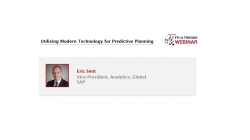Watch the full recording of the FP&A Trends Webinar to look at the examples of Predictive Analytics in FP&A and understand

There are many terms connected with FP&A, such as “unstructured analysis,” “predictive analytics,” and “machine learning". Often very little detail on
FP&A Predictive Analytics and Scenario Planning represent a truly powerful force for dealing with uncertainty, complexity, and risk. Watch the full
Analysis is only as good as the decisions that result from it. In the uncertain business environment, organisations that provide

Organisations are increasingly adopting data-driven approaches to decision-making. This is natural, given the amount of data we now have on
In this 7-minute presentation, Stefan Spiegel, CFO at Swiss Railway Freight Logistics (SBB Cargo AG), explains his company's journey towards
Pagination
Subscribe to
FP&A Trends Digest

We will regularly update you on the latest trends and developments in FP&A. Take the opportunity to have articles written by finance thought leaders delivered directly to your inbox; watch compelling webinars; connect with like-minded professionals; and become a part of our global community.







